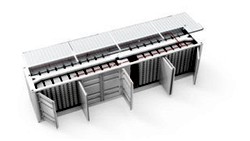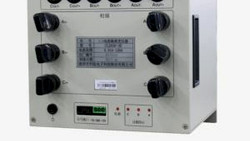Demand Response Management (DRM) is an essential element of the future smart grid that helps to decrease peak demand and fluctuation in power.

Benefits for the User
Demand response allows users to play an important part in grid management by lowering or adjusting their power usage during peak hours in response to time-based tariffs or other types of financial incentives.
Some electricity grid operators and decision makers employ demand response programs as resource alternatives for balancing supply and demand. Offering time-based rates such as time-of-use pricing, critical peak pricing, variable peak pricing, real time pricing, and critical peak refunds are examples of ways to engage customers in demand response operations.
Direct load management schemes, which allow power providers to cycle air conditioners and water heaters on and off during peak demand hours in return for cheaper electricity costs, are also included.
Individual load limit settings are allowing a higher degree of flexibility.
Benefits for the Power Provider
Demand response management (DRM) is recognized as an increasingly valuable resource alternative by the electric power companies, whose capabilities and potential impacts are being enhanced by grid modernization projects.
Smart meters and other sensors, for example, can detect peak load problems and use automated switching to redirect or reduce power in crucial locations, eliminating the possibility of overload and the following power failure.
The availability of advanced metering technology expands the number of time-based pricing plans available to consumers. Smart meter solutions and accessories, such as in-home displays or home-area networks, can help customers to adjust their behavior and minimize peak time use by providing them with information about their power consumption and expenses.
These initiatives may also assist power companies in saving money by reducing peak consumption.
What about Renewables?
Together with energy storage, DRM comes to the next level. Demand response and energy storage are flexible power grid sources that improve the synchronization of renewable energy output and demand.
Demand response, for example, allows for demand to be shifted to periods of relatively high wind generation and low load, whereas storage technologies can store surplus wind output for use at times of relatively low wind generation and high load.
Cost wise, the threshold at which storage or demand response becomes economically relevant is difficult to estimate, due to a lack of understanding of the availability and cost of grid flexibility alternatives, which vary by area.
High variable generation penetration raises the demand for all flexibility alternatives, creating market potential for storage and demand response systems.
Conclusion
Effective demand response management involves all available system solutions and resources. It's more a combination of real time data, progressive predictions, storage capabilities and other soft/hardware components. With a proper advanced meter integration, our smart distribution solution and intelligent energy storage control, we cover the main aspects of demand response. Contact us for your individual questions or leave a comment.
Thank you for reading and stay safe!
Editor's note: This article was originally published in August 2022 and has been updated for comprehensiveness.





You possess such amazing insight to pass on to others. Cheers for spreading this.
Thank you for reading and kind comment.
I am so glad you shared this information. It is very helpful for me.
Thank you for interest and kind comment.
My favorite part of your article is when you said that the number of time-based pricing schemes for consumers increased with the availability of improved metering technologies. Our landlord is planning to get energy-efficient lighting for our subdivision here in Queensland. With demand response management, tenants like us could monitor our electricity consumption and help us lower our bills in the future.
Thank you for reading and your comment.
Do you have automated power transformer 69 kv
Thank you for your comment. We will connect with you via email for more details.